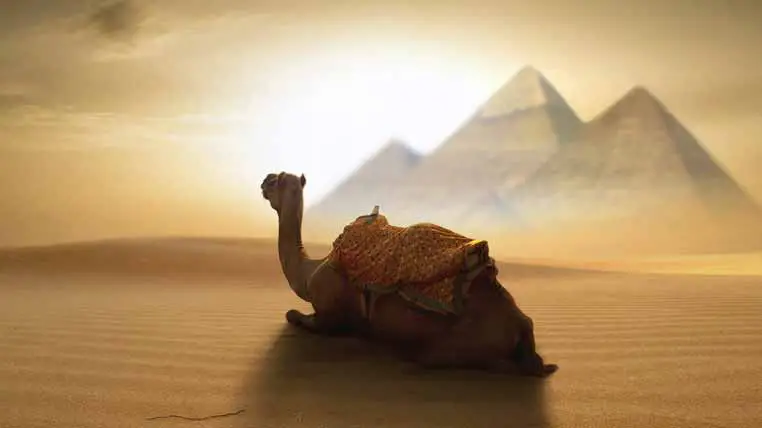When it comes to desert mysteries, it becomes clear that these arid zones hold some of history’s greatest enigmas.
The sand stretches of the world’s great deserts have fascinated people since ancient times, with legends speaking of whole crowds of people who attempted to cross the seas of sand but were never seen again.
Today, with modern methods of analysis and research, scientists have uncovered some of the great mysteries of the deserts.
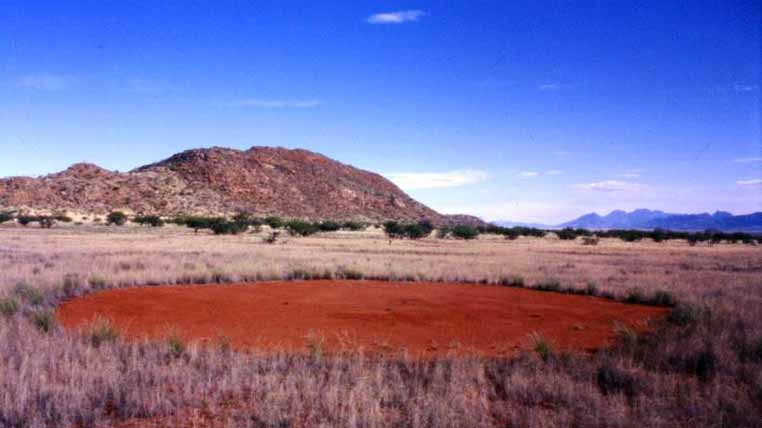
Desert Mysteries - Namibian Fairy Circles
The Namib Desert is home to millions of mysterious circles drawn in the sand. Each circle is perfectly outlined by 20-30 cm tall vegetation, but nothing grows in the center, even when the soil is fertilized and watered abundantly.
The mystery surrounding these circles’ origin has inspired several recent theories, but none have been deemed plausible enough to satisfy those studying the phenomenon.
Possible causes include strange termite activity, wild animals using the circles to “bathe” in the sand, toxic plants destroying other vegetation, pockets of methane gas close to the surface, or an accentuated imbalance of soil nutrients.
Although most of these formations are concentrated in the Namib Desert, the strange phenomenon has spread over about 1,800 km, almost up to the Cape Province in South Africa.
The fact that the formations do not overlap indicates a connection between them, a systematic organization.
The circles have diameters between 2 and 20 meters and a “life span” of up to 75 years, after which they disappear as suddenly as they appeared.
The sand circles in the Namib Desert remain one of its biggest desert mysteries.
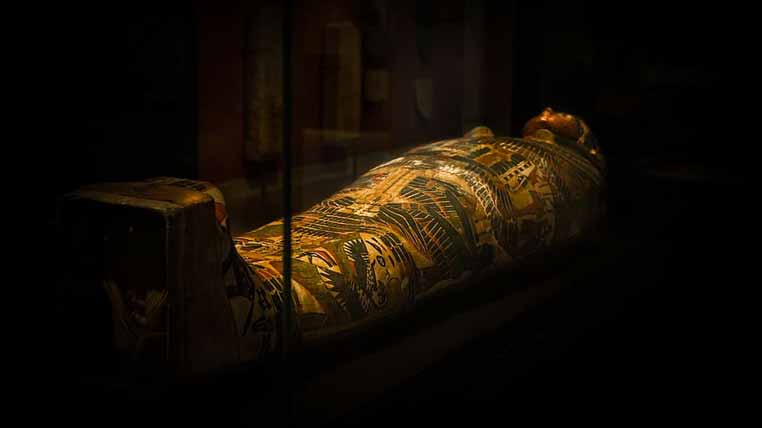
Desert Mysteries - The Mysterious Tomb
Valley of the Kings, where the remains of King Tutankhamun were discovered, still holds a 3,000-year-old ancient secret.
In 2005, an entirely limestone-built crypt was accidentally found, which housed 28 large clay vessels and seven sarcophagi.
The sarcophagi were sealed and beautifully painted, but none contained human remains. Instead, both the sarcophagi and the vessels were filled with clay, rocks, dirt, rotten wood, remains of textiles, and natron (a substance used by ancient Egyptians to dehydrate the dead).
The mystery behind the tomb remains unanswered.
Was it a false burial meant to deceive someone? Maybe an attempt to deceive tomb robbers? If so, the entire effort was in vain, as the tomb appears to be one of the few in the Valley of the Kings left untouched by thieves.
If it was an attempt to deceive, there should have been some valuable items, royal seals, and hieroglyphic inscriptions, the typical elements in an Egyptian tomb, necessary to make the false tomb as realistic and attractive to looters as possible.
But nothing was found.
The tomb in the Valley of the Kings remains one of the great desert mysteries, with no explanation as to why these valueless objects were sealed with such care (like real mummies) and buried in the great necropolis reserved exclusively for pharaohs.
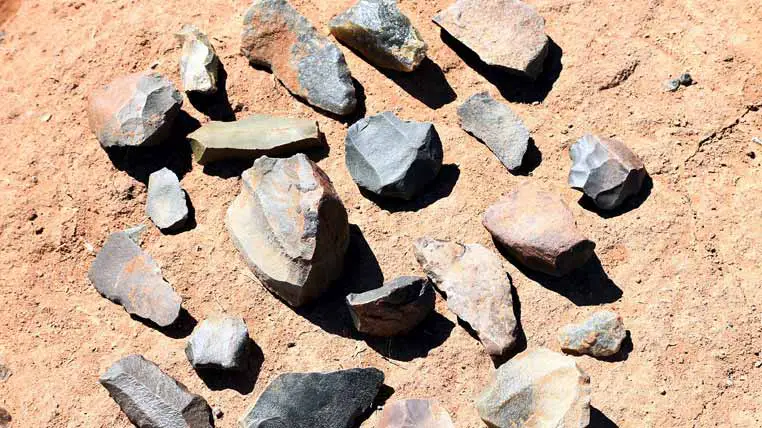
Desert Mysteries - The Unknown Ancestor
In 2011, in Kenya, the oldest stone tools discovered were excavated and believed to be from 3.3 million years ago, when no human civilization existed.
Previously, the oldest human remains found were located in the region known as Omo, and were approximately 195,000 years old. These fragments were referred to as Omo 1.
However, the tools discovered in Kenya predate Omo 1 by more than 3.1 million years, leading researchers to believe that they were made by a species of hominins not yet discovered, who lived long before any of our ancestors and possibly had the physical and mental ability to shape stone using harder rock.
It is also possible that this unknown species is not directly related to modern humans and is a distinct species that did not survive the evolutionary process.
The researchers are still trying to explain the age of the tools found in Kenya. But until an explanation is provided, the mysterious stone tools remain one of the biggest desert mysteries.
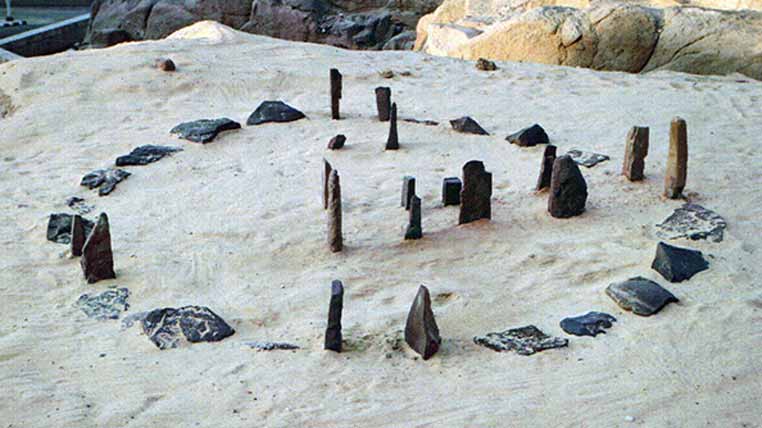
Desert Mysteries - Nabta Playa
The Sahara Desert is home to a monolithic structure known as Nabta Playa, which predates Stonehenge by at least 1,000 years.
The site consists of an outer ring of massive stones, five rows of slabs (some horizontal, some vertical), and possible burials. Each large stone weighs several tons and stands over 2.7 meters tall.
An unknown civilization from the Stone Age is believed to be responsible for constructing the complex over 6,000 years ago.
The stones of Nabta Playa mark the summer solstice and possibly the rainy season and were built on the edge of a former lake. During the rainy season (August to October), the site was partially submerged in water.
Archaeological excavations have uncovered several animal remains, primarily cattle and some everyday objects. However, no human remains have been found.
J. McKim Malville, a professor emeritus at the University of Colorado and expert in archaeoastronomy, stated that Nabta Playa is one of the earliest examples of observational astronomy and the first attempt by human beings to make a serious connection with the sky.
Interestingly enough, if the complex was indeed built 6,000 years ago, the mysterious civilization that created it predates the ancient Egyptian civilization by thousands of years.
Furthermore, this mysterious civilization must have been much more technologically advanced than previously thought, potentially laying the foundations for the first pharaonic dynasty in Egypt.
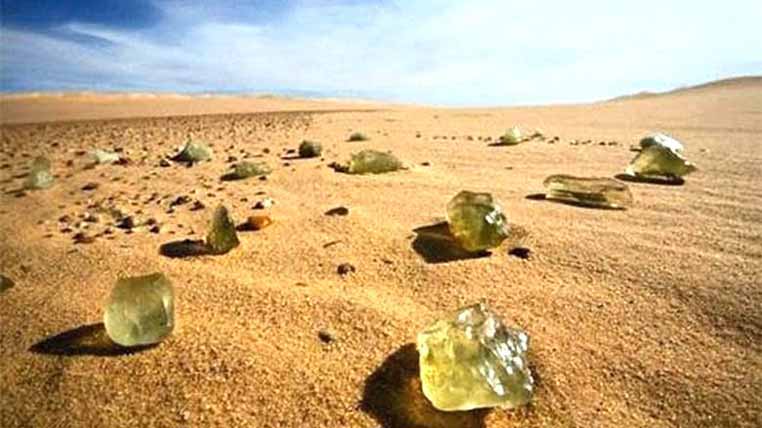
Desert Mysteries - Desert Glass
One of the strangest desert mysteries is the so-called “desert glass.” Tests on a colored glass scarab, believed to have belonged to Pharaoh Tutankhamun, showed that the glass used to make the jewelry is much older than the First Pharaonic dynasty.
To explain this enigma, archaeologists have found an area in the Sahara Desert where the same type of glass covers the sand.
Interestingly, the glass formations in the Sahara correspond almost perfectly to the imprints left in the sand by the first atomic test in New Mexico in 1945.
The atomic blast melted the sand and turned it into glass of various colors.
However, the glass formations in the Sahara are much more impressive and cannot be explained by the New Mexico explosion alone.
The only possible explanations are numerous lightning strikes in a small area, the impact of a meteorite, or a nuclear explosion.
Computer simulations suggest that if a large meteorite had disintegrated and exploded above the area, the heat released would have been approximately 18,000 degrees Celsius.
This hypothesis is supported by the information obtained on-site and tests on zirconium debris found in the area. The degree of degradation of the zirconium suggests that the cause of the glass formations in the Sahara was not of terrestrial origin.
The mystery of “Sahara Glass” is not the only mystery of its kind. Southeast Asia has a “glass plain” covering almost 800 square kilometers.
Research shows that the glass was formed around 800,000 years ago and resulted from a devastating event.
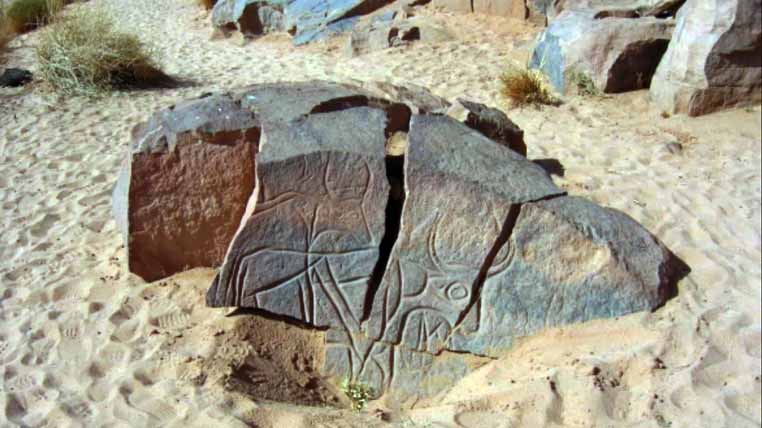
Desert Mysteries - The Lost Cities
There has yet to be a consensus on the age of the Sahara Desert.
Some believe it formed 2 to 3 million years ago, while recent discoveries suggest it became a desert only 2,700 years ago after a slow period of transformation.
This conclusion was reached by studying the sediment layers on the bottom of Lake Yoa in northern Chad, which reconstructed the region’s history for the last 6,000 years. This contradicts the theory that the Sahara transformed into a desert 5,500 years ago.
Sediment samples obtained from drilling off the coast of Mauritania showed a sudden increase in the amount of dust carried by winds blowing away from Saharan Africa, according to a study by specialists from Columbia University in New York.
Prehistoric paintings and engravings in the region indicate that the Sahara was once home to a diverse array of plants and animals, such as elephants, giraffes, and hippopotamuses.
Using satellite images, specialists from the University of Leicester have discovered over 100 structures resembling medieval castles and several lost cities in the southwestern Sahara desert of Libya.
These cities were created by an ancient civilization called the Garamantes, believed to have consisted of barbarian nomads.
However, according to the research coordinator, David Mattingly:
In fact, they were very civilized. They lived in extensive fortifications and were predominantly farmers in oases. The state was organized in cities and villages. They had a written language and benefited from very advanced technology. The Garamantes were pioneers in creating oases and opening up trans-Saharan trade.

Desert Mysteries - P-40 Kittyhawk
The desert mysteries list also includes a strange war story.
On June 28, 1942, during World War II, an American P-40 Kittyhawk fighter plane piloted by 24-year-old Dennis Copping crashed in the Sahara desert.
In 2012, the plane was found in perfect condition, but the pilot’s fate is unknown.
It is believed that although Copping faced problems during the flight, he managed to land on the sand. Military historian Andy Saunders suggested that he even survived the impact, pointing to a parachute on one side of the plane.
This theory was supported by the fact that the radio and batteries were removed from the plane as if Copping had used them after landing.
However, Dennis Copping’s faith remains a mystery, as the pilot’s remains were not found in the area.
At Ancient Theory we only use trusted sources to document our articles. Such relevant sources include authentic documents, newspaper and magazine articles, established authors, or reputable websites.
- David Perry - Mysteries Of The Desert You've Never Heard Of. grunge.com.
- Jana Louise Smit - 10 Unsolved Desert Mysteries. listverse.com
- Elitsa Staneva-Britton - Archaeologists Want To Explain These 15 Strange Desert Finds (But Can't). thetravel.com.
- The mysteries and threats of the deserts are revealed in the Courier. en.unesco.org.
- G. H. S. Bushnell și Maria Reiche - Mystery on the Desert. Nazca (Peru). Offizindruck AG, 1968.
- Nabta Playa - wikipedia.org. [Source]
- Eric Betz - Nabta Playa: The world's first astronomical site was built in Africa and is older than Stonehenge. astronomy.com.
- Mysterious 10,000-year-old ruins found in the Syrian desert. foxnews.com. [Source]
